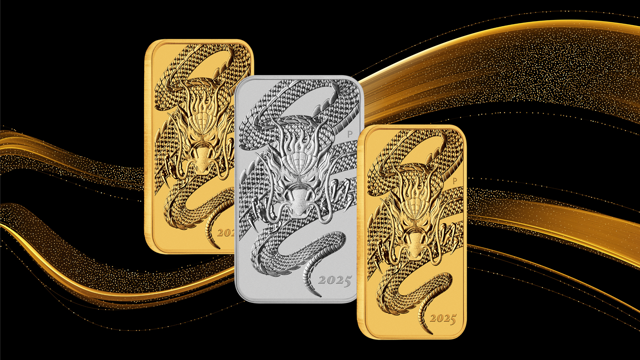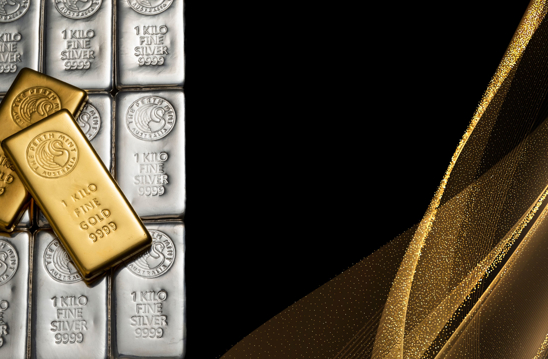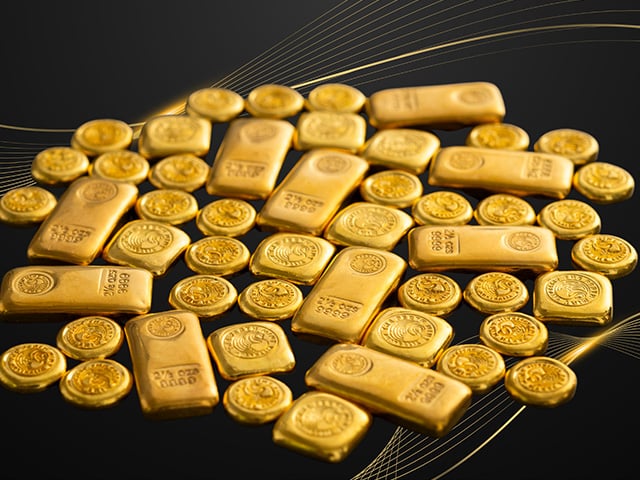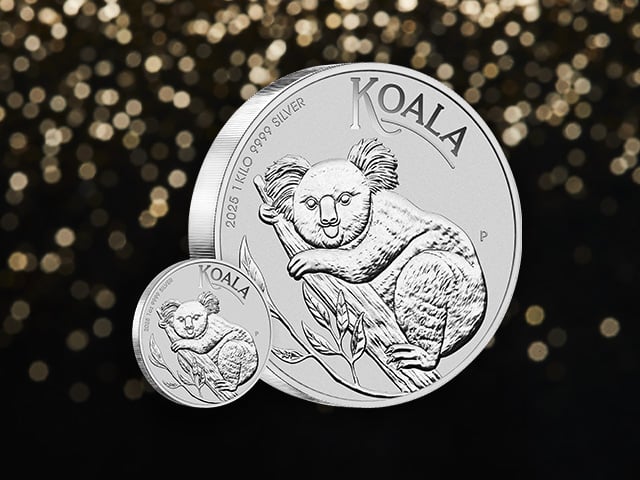What are SMSF trustees saying about gold?

The Perth Mint recently hosted the webinar Gold - Where to next? for Australian Shareholders Association (ASA) members.
The webinar looked at recent performance trends in gold, outlook for investment demand, potential short-term headwinds and tailwinds driving the gold price, and key reasons investors, including SMSF trustees, are including a gold allocation in their portfolios.
During the webinar, we asked trustees two questions relating to the outlook for investment markets. The first of those was whether or not they were concerned about the potential for further equity market volatility, with more than 90% of respondents stating that they were concerned.
This is relevant for future gold demand, as market data from 1971 to 2019 reveals that gold has typically been the highest performing asset in the months, quarters and years that equities suffered declines in value. It also happens to be positively correlated to rising equity markets.
The second question related to interest rates, and how concerned respondents were about the current cash rate of 0.25%, and the outlook for rates in the years ahead, with Australian 10-year government bond yields below 1%. More than 60% of respondents stated that this was a concern for them.
The anxiety regarding low interest rates will likely help drive gold demand in the future.
Market history tells us that gold has been an outperformer in periods of low real interest rates, delivering annual average gains of more than 20% in nominal terms between 1971 and 2019 in the years when real interest rates were 2% or less.
At the end of the webinar there were plenty of questions from attendees looking for further information not only for the investment case for gold, but also the practicalities of incorporating the precious metal into their portfolio.
We’ve included some of those questions, and our answers, below.
Is supply of gold from miners growing faster than demand?
Over the 10 years to the end of 2019, gold demand has averaged just over 4,400 tonnes, whilst gold mine production averaged just over 3,200 tonnes, so gold mine supply is not outgrowing demand.
More importantly, it is critical for investors to appreciate that whilst gold production on an annual basis can and does change (it rose by 24% between 2010 and 2019) this newly mined gold is only a small fraction of the existing stockpile of gold.
That stockpile has been built over thousands of years as human beings have found gold, mined gold, refined gold, and then either worn it as a display of wealth as jewellery, or held it as investment in bar or coin form.
The table below illustrates how small an impact annual mine production has on the total gold stock, by highlighting the total above ground gold stock on a yearly basis over the last decade (the increase in this number effectively represents annual gold production) and the percentage increase in the total gold stock on a yearly basis over this timeframe.
As you can see, the total supply of gold increases at an incredibly stable rate over time.
Impact of mine production on gold stocks
Year
Total above ground gold stock (tonnes)
Change in total above ground stock (%)
2009
165,554.85
2010
168,348.49
1.69
2011
171,205.93
1.70
2012
174,135.02
1.71
2013
177,245.37
1.79
2014
180,448.31
1.81
2015
183,749.01
1.83
2016
187,147.48
1.85
2017
190,602.67
1.85
2018
194,111.99
1.84
2019
197,575.66
1.78
Source: The Perth Mint, World Gold Council
Given that the price of any asset is determined by its supply and its demand, this understanding of gold’s stable total supply should make it clear to investors that the gold price is almost exclusively demand driven.
How much gold should an investor have in their portfolio?
The percentage of a portfolio that an investor chooses to allocate to gold (or any asset class for that matter) is a personal one, and can be driven by multiple factors including but not limited to their age, their employment status, their income requirements, their existing asset allocation and their tolerance for short-term volatility.
Some investors will have zero allocation, whilst others, including diversified managed funds like The Cor Capital Fund, will have up to 25% of their portfolio in gold.
Describing gold as ‘liquid bricks and mortar’, this fund has noted in various publications that they ‘love the negative correlation of gold to stocks when stocks fall’ and have confidence in their gold allocation due to ‘the price history we can study over hundreds of years relative to other commodities and currencies’.
While The Perth Mint can’t provide advice on what allocation gold investors should have in their portfolio, many of our SMSF trustee customers often allocate 5-10% of their portfolio into precious metals.
What is the best method for buying gold and how much does it cost to store?
Much like equity investors have multiple vehicles through which they can gain their exposure (direct shares, managed funds, ETFs or LICs for example), one can invest in gold in multiple formats, with no one approach that is best for all investors.
Physical bars and coins are the traditional method, and remain popular, especially for those who like to feel tangible wealth in their hands, though these products typically come with higher trading fees due to the fabrication costs of manufacturing them.
One cost-effective way to obtain exposure to gold is to use a gold Exchange Traded Product, like Perth Mint GOLD (ASX: PMGOLD), which has a management fee of just 0.15%.
Another option that is popular with SMSF trustees is to use a Perth Mint depository account, which allows you to trade 24/7, with The Perth Mint providing custody of the metal you own. Trading costs are typically 0.95% for trades between AUD 10,000 and AUD 100,000, with the rate declining as the size of the trade grows.
Storage costs for depository accounts are either 1% per annum for allocated bars (that is bars you have direct legal title too), or we also offer unallocated gold (you don’t have title to a specific bar in this case, rather a claim on gold being used in the value chain of the business of The Perth Mint) which has no storage costs at all.
Why hasn’t silver performed as well as gold recently?
Whilst gold is seen as a safe-haven asset and monetary commodity, silver is seen as a quasi-industrial commodity, with almost 60% of its demand driven by industrial use including photography and silverware.
As such, silver often tends to sell off during periods of heightened concern about global growth, with the economic fallout from the steps taken to contain Covid-19 (which saw the Goldman Sachs Commodity Index fall 40% in the first three months of the year), also hitting silver, which fell by 20% over the same time period.
Gold on the other hand rose during Q1 2020, up 4% in USD terms and almost 20% in AUD terms, as it benefitted from flight to safety investor flows as equity markets tumbled over this time period.
Are Australian investors better to invest in gold hedged in USD rather than unhedged in AUD?
Investing in gold unhedged in AUD gives investors exposure to two factors:
- the movement in the USD gold price, and
- the movement in the AUDUSD FX rate.
While this brings with it another risk factor for Australian investors with precious metal exposure, it also adds another potential source of return, as any fall in the value of the AUD vs. the USD will boost the AUD price of gold.
Many of the Australian investors we deal with at The Perth Mint are happy to have their exposure to gold unhedged in AUD, as they see it as currency diversification for their overall wealth, given they typically earn their income in AUD as well as have exposure to Australian real estate, shares and cash in their portfolio.
Ultimately though, it is the individual investor who needs to choose whether they want that currency exposure or not.
Are gold miners a better investment than gold?
This is a great question and one we’ve been asked many times over the years. Just like buying shares in Australia’s big banks is not the same as buying an investment property (even though the majority of bank lending is directed toward residential property these days), gold and gold miners are different investments.
While they both can play a valuable role in an investment portfolio, it is important to realise they have different characteristics and qualities.
Gold is an exceptionally liquid asset (turnover in the gold market is typically more than USD $150 billion per day), has zero credit risk, and has a long track record of protecting wealth in periods where equity markets sell off. Gold is also a very simple investment, however, it doesn’t provide an income stream.
Gold miners on the other hand can pay dividends, and can see their profits grow substantially in periods of rising gold prices, depending on a handful of factors including their ability to:
- maintain or grow production
- maintain or grow the margins they make on their production.
As such, there are many other risk factors to consider when investing in gold miners, with movements in gold mining company share prices typically being more volatile than movements in the gold price itself.
In terms of how the market views these distinct assets, it tends to treat gold itself as a defensive asset, due to its historical outperformance in periods of low real interest rates, its ability to hedge equity market risk, its high liquidity and lack of credit risk.
Gold equities are typically considered to be growth assets, and fit within the equity component of a portfolio, due to the higher risk/higher return characteristics they typically display.
Again, whilst it’s not for The Perth Mint to advise, diversified investors may wish to choose both in their portfolio.
DISCLAIMER
Past performance does not guarantee future results. The information on this page and the links provided are for general information only and should not be taken as constituting professional advice from The Perth Mint. The Perth Mint is not a financial adviser. You should consider seeking independent financial advice to check how the information on this page relates to your unique circumstances. The Perth Mint is not liable for any loss caused, whether due to negligence or otherwise, arising from the use of, or reliance on, the information provided directly or indirectly, by use of this page.












